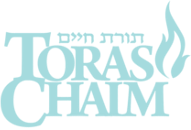As a community, we have been shaken by a series of recent tragic losses and challenges experienced by individuals and families within our community. We are unsettled, and we wonder what it all means and which steps we might consider in response.
Yet now, on Chanukah, it is worth pausing for a moment and recognizing that this feeling is itself a reflection of something profoundly positive within our community. We feel for each other. As large as we have grown, and as much as we often pass each other by without notice, we continue to be a community that is deeply connected and feeling for one another.
Chanukah is always celebrated at the time of year that we read from the Torah the story of Yosef and his brothers. That story chronicles the depths of discord and distance that can grow between us, between a Jew and his brothers. We recall how we cast our brother into a pit and then sat and enjoyed a meal, impervious to his pleas for compassion and aid. And we remember Yehuda leaving his brothers, creating close friendship and marrying outside of his community.
Chanukah represents the reverse of that. The heroes of the Chanukah story are the Chashmona’im, descendants of Levi. When Yaakov addressed Shimon and Levi on his deathbed, he spoke of them as brothers, “Shimon v’Levi Achim.” Ramban (49:5) explains that Yaakov was taking note of their strong feeling of brotherhood and family, and recognized that this was the driver for their strong response to what had befallen their sister Dina. Indeed, in the Midrashic accounts of the story of Chanukah, the daughter of Matityahu the Kohein Gadol called upon her brothers to stand up for her honor in the same way their grandfather Levi had done for Dina.
And the Chanukah story involves the correction of a failure in the identity of brotherhood, as during that period the Jewish people experienced the phenomenon of the MisYavnim – Hellenized Jews – who identified with the Greeks more than with their fellow Jews.
It is therefore fitting that the Mitzvah of Chanukah candle lighting is performed on behalf of the family – Ner Ish uBeiso – including its members both physically present and distant. And as Yosef and Yehuda ultimately became the agents of healing by their eventual recognition of their absolute connection to their family, we too celebrate this festival in the firm embrace of family.
Another feature of Chanukah underscores this same idea. The Talmud describes Chanukah as a festival established for Hallel v’Hodaah, praise and thanksgiving. In the Maoz Tzur song of Chanukah, we modify this to describe it as a festival established for song and jubilation, Kavu Shir uRnanim. This mandate is taken seriously, as even those who usually do not usually recite Piyyutim (liturgical poetry), sing the traditional songs following the lighting of the candles. In addition, in his notes to the Shulchan Aruch, Rema notes that Chanukah meals are rendered Seudot Mitzvah by the singing of songs of praise at the festival table. Song is thus an important part of celebrating Chanukah. And song is a shared experience. Whereas Halacha requires readings to be performed by a lone voice (תרי קלי לא משתמעי), song is enhanced by a chorus of voices. Song is inherently an experience of connection and community, and therefore especially appropriate for this festival of family and community.
As we celebrate this Chanukah, we have been reminded of the sense of extended family within our community. The reminder is painful. But it demonstrates the presence of a beautiful connection between us.
Shared pain is the price we pay for caring for each other, for true brotherhood and family. It is a price worth paying.
